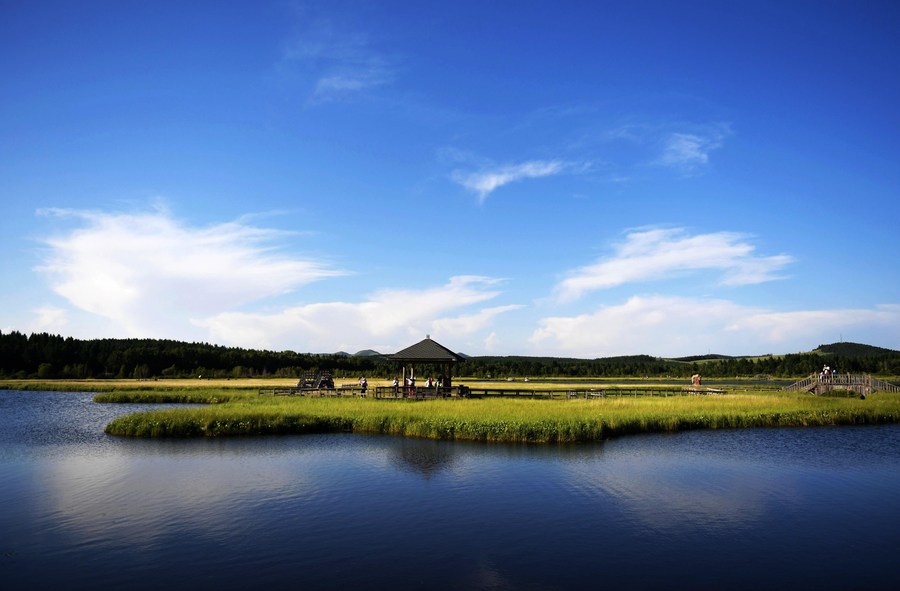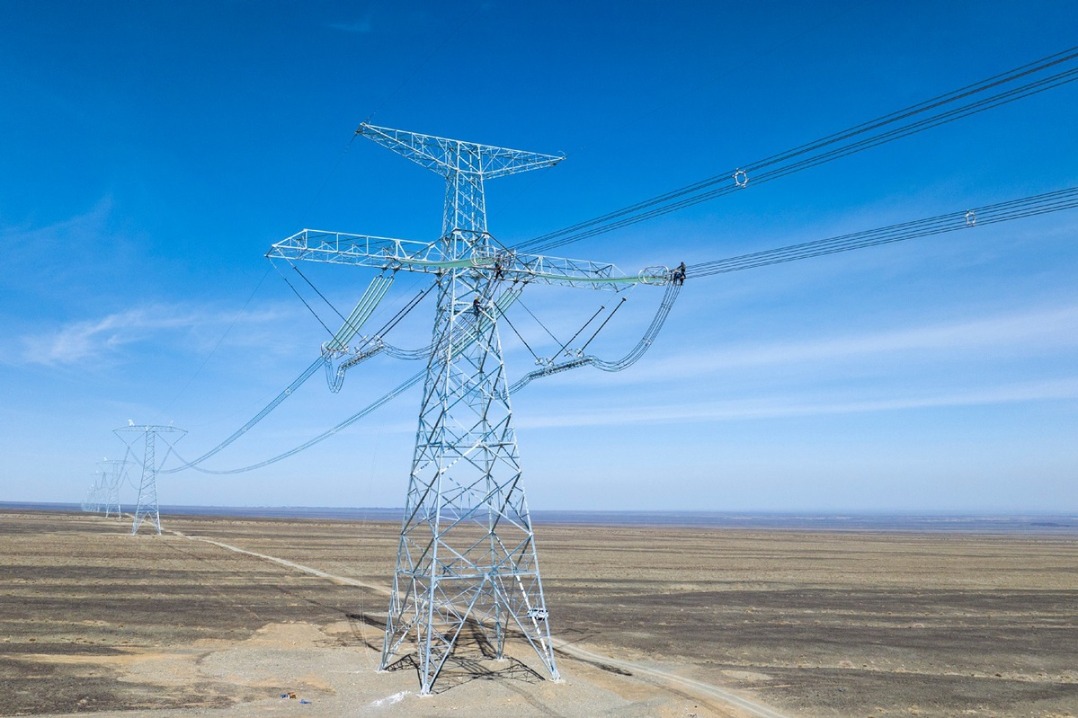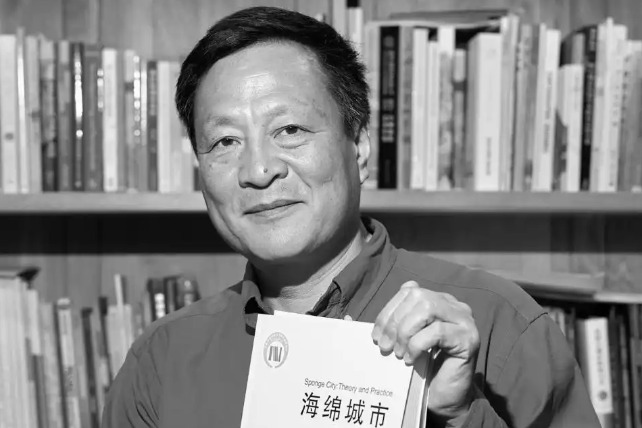Philosophy of green growth has taken root


Saihanba epitomizes efforts to improve environment, says former UN official
Saihanba, the world's largest cultivated forest, was in the spotlight again when President Xi Jinping hailed it as an example of the global history of ecological progress during his recent inspection tour of Hebei province.
Xi, who is also general secretary of the Communist Party of China Central Committee, made the remark in August during an inspection tour to the Saihanba Forest Farm, which has undergone a green miracle over the past six decades as it was changed from a near desert to a sea of trees.
Monique Barbut, former executive secretary of the United Nations Convention to Combat Desertification, said the miraculous transformation of Saihanba epitomizes the country's efforts to improve the environment and protect its ecosystems. "It also revealed the central government's determination to adhere to the path of green development," Barbut said in a recent interview with China Daily.
Since 2012, the development of ecological civilization, a concept that aims to promote green development, has gained greater momentum as the idea that "lucid waters and lush mountains are invaluable assets", conceptualized by Xi, has taken root across the country.
Barbut said the theory goes "very well" with the idea behind ecosystem conservation, rehabilitation of degraded land to improve livelihoods and the environment, and land degradation neutrality.
"We must never destroy nature (in order) to develop. If we do the right things, in the right places on the right scale, we can live in harmony with nature and still achieve remarkable growth," she said.
The forest farm, located around 400 kilometers north of Beijing, covers about 70,000 hectares. In the 1950s, the region was a wasteland due to rampant logging, which resulted in the Chinese capital and adjacent regions being frequently hit by sandstorms.
To stop rapid desertification, a group of 369 foresters from 18 provinces was established in 1962. Thanks to the ongoing efforts of generations of Saihanba foresters, forest coverage in the region has increased from 11.4 percent in the early 1960s to 80 percent today.
The woodland also acts as an important environmental shield and green lung for Beijing and neighboring regions.
Saihanba was given a Champion of the Earth Award, the highest honor of the United Nations Environment Program, at the third UN Environment Assembly in Nairobi in December 2017.
During his visit, Xi called for further progress in developing the green economy and ecological conservation and praised the spirit of the foresters, which is regarded as a leading example of the nation's efforts to advance ecological conservation.
He also spoke of the hardworking spirit the foresters demonstrated in planting the forest, saying it is part of the spirit of the Communist Party of China to struggle for success.
Grand goal
In the report delivered at the 18th CPC National Congress in 2012, ecological development was included as a major task in the country's overall plan and building a "beautiful China" was proposed as a grand goal for ecological progress.
Eco-civilization was also included in the CPC Constitution as a development principle during the meeting. It was the first time in the world a ruling party had highlighted green development in its guidelines.
Under the principle, the country is now speeding up the establishment of a national territory spatial planning system, with the ecological protection the priority of three "red lines" that will guide construction.
Xi's philosophy for green development is changing China.
China has raised its area of forest coverage from 12 percent in the early 1980s to 23.04 percent in 2020, with its forest stock volume hitting 17.56 billion cubic meters, according to the National Forestry and Grassland Administration.
The per capita green area in China's urban areas averages 14.8 square meters and 441 cities have joined in a campaign to build national forest cities through multiple greening methods.
The country also initiated its first pilot program to establish grassland nature parks last year, with 39 pilot projects covering a total of 147,000 hectares of grassland in 11 provinces and autonomous regions.
At a recent news conference, an official from the administration said that vigorous measures will be taken by China's forestry authorities, such as expanding grassland and forests, to fulfill the country's climate commitment to peak carbon dioxide emissions before 2030 and achieve carbon neutrality before 2060.
In the next five years, forest coverage in China will hit 24.1 percent and the country's forest stock volume will reach 19 billion cubic meters, according to Zhang Wei, director of the administration's environment protection and restoration department.
"We will build a conservation system on nature reserves, protect various natural resources and maintain a strong attitude toward illegal activities that will harm nature," Zhang said.
Apart from that, the administration will also promote carbon trading in the future and aim to build a trading platform, encouraging the participation of capital from nongovernment sectors, including enterprises and social organizations.
"China has promoted its own approach to climate governance that highlights green recovery. The forestry department at all levels will play to our advantage and strengthen our green industries, further contributing to our commitment to climate change," said Li Chunliang, deputy director of the administration.
Cao Desheng and Xinhua contributed to this story.
- World's tallest bridge opens to traffic in Guizhou
- China forecasts average of 2m border crossings over upcoming holiday
- Xinjiang transforms deserts into renewable energy goldmine
- World's highest bridges in China become a magnet for extreme sports enthusiasts
- UNESCO Confucius Prize for Literacy honors innovative education projects
- UNESCO adds 26 new biosphere reserves, including 2 in China




































